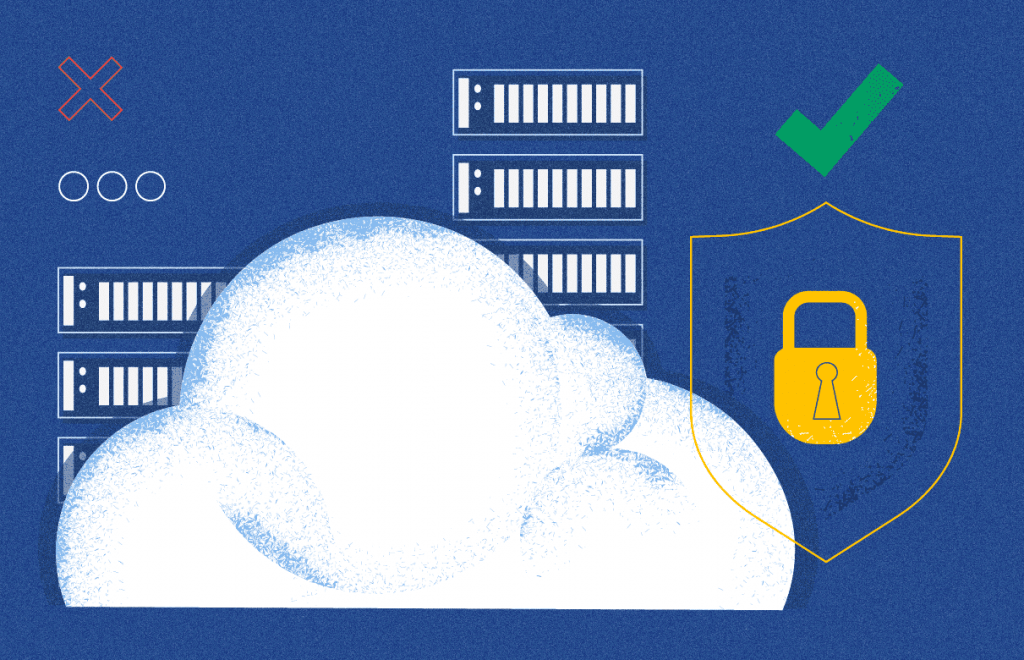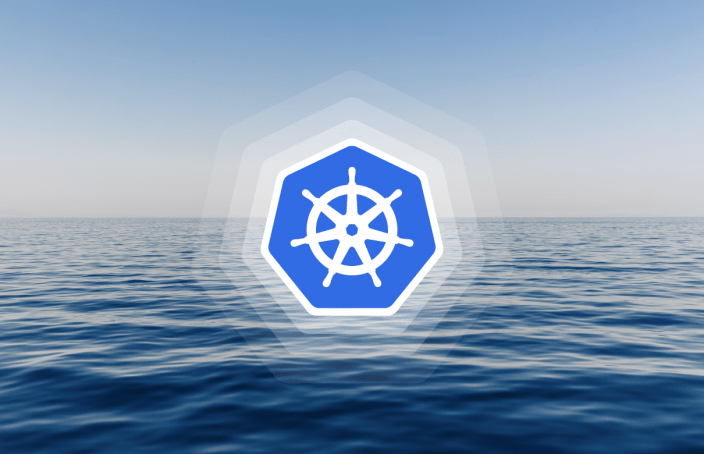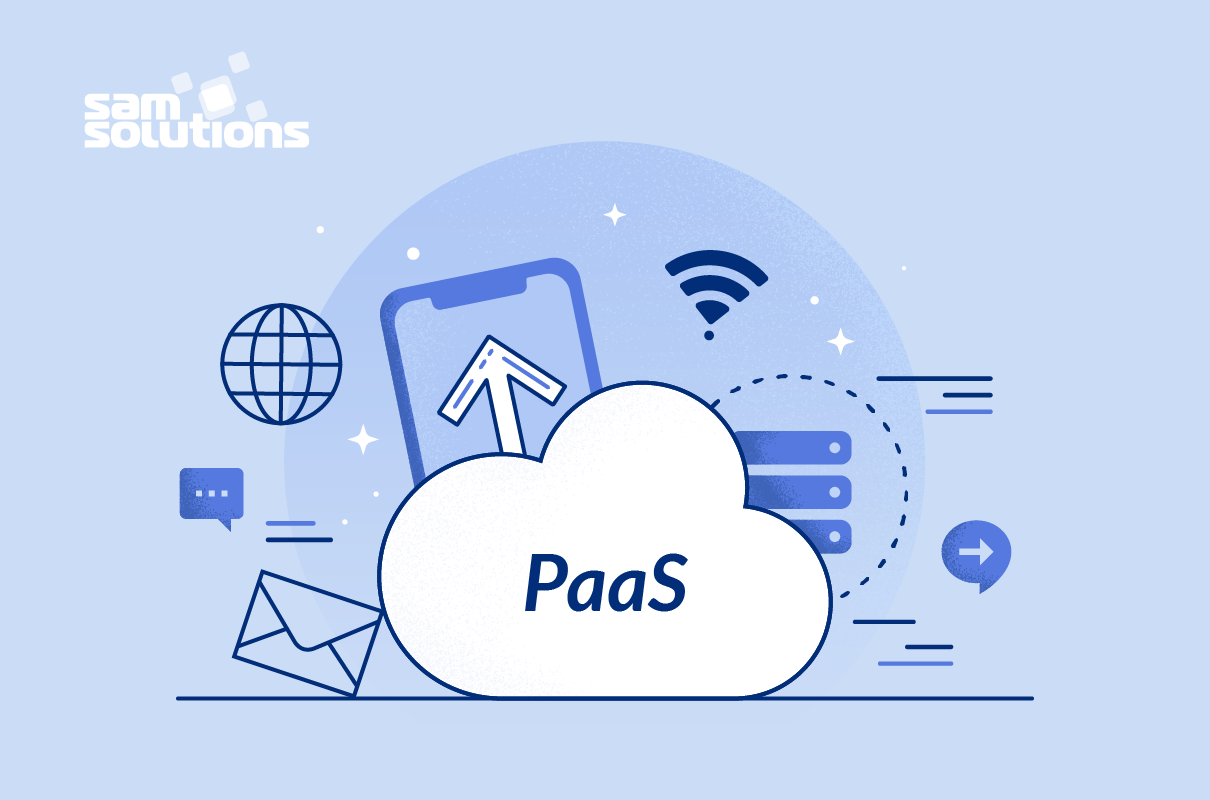What are the most popular cloud deployment models? There are four main types: public, private, hybrid and community clouds. Additionally, there are also distributed clouds that are not as widespread, such as multiclouds, poly clouds and other models.
Drive your digital transformation to the next level with our world-class cloud development services
Before we dive into the essentials of the most popular cloud computing deployment models, let’s figure out what a cloud deployment model is exactly. A cloud deployment model is a specific configuration of environment parameters such as the accessibility and proprietorship of the deployment infrastructure and storage size. This means that deployment types vary depending on who controls the infrastructure and where it’s located.
“Cloud will increasingly be the default option for software deployment,” said Jeffrey Mann, Research Vice President at Gartner.
To make the most use of this computing type, a company should opt for a model that suits it best. To choose the right one for you, you’ll need to consider your computing, networking and storage requirements, available resources and business goals, as well as the pros and cons of cloud deployment models.
So, let’s get started!
1. Public Cloud
The name speaks for itself: public clouds are available to the general public, and data are created and stored on third-party servers.
Server infrastructure belongs to service providers that manage it and administer pool resources, which is why there is no need for user companies to buy and maintain their own hardware. Provider companies offer resources as a service both free of charge or on a pay-per-use basis via the Internet. Users can scale resources as required.
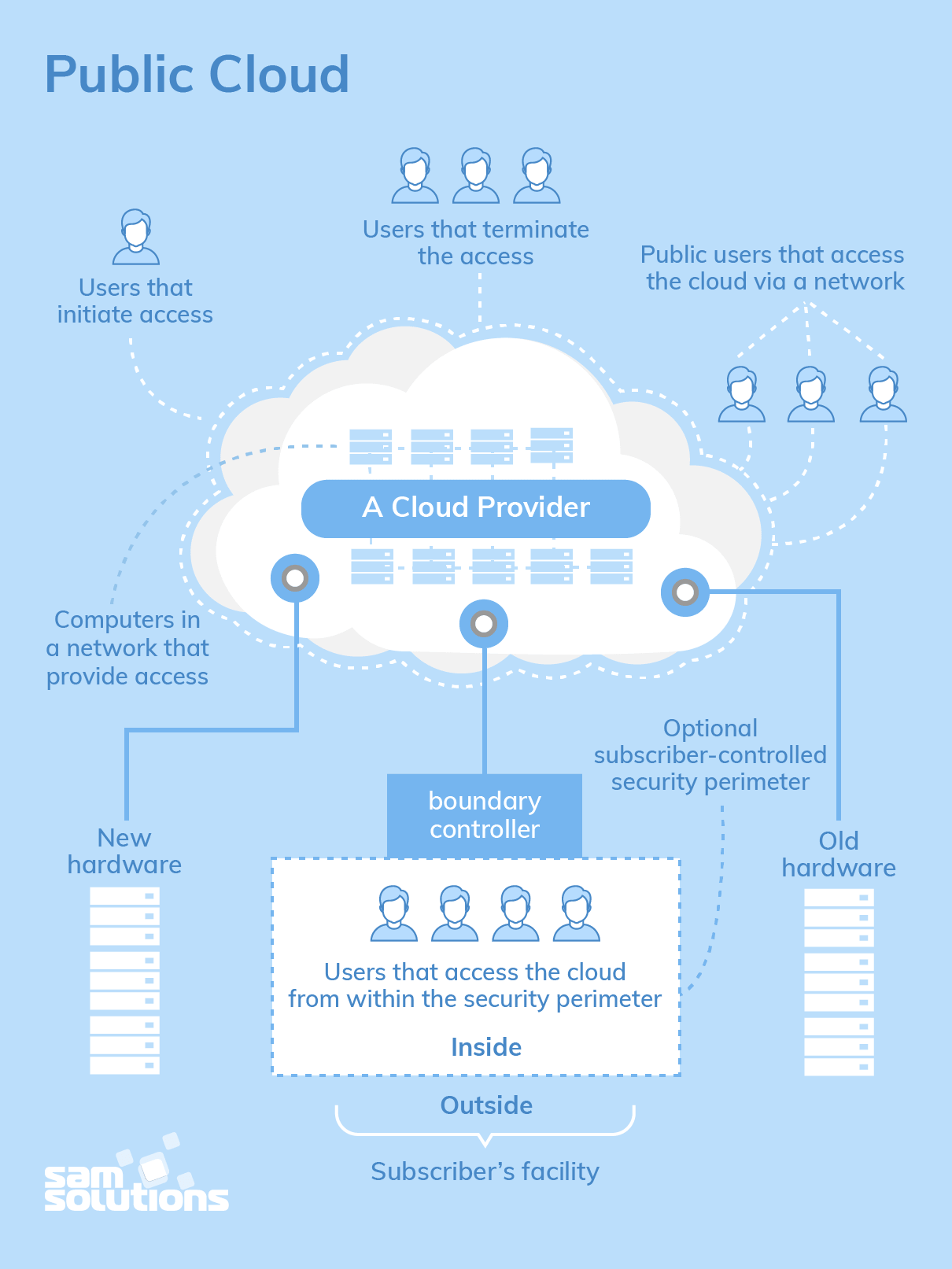
The public cloud deployment model is the first choice for businesses with low privacy concerns. When it comes to popular public cloud deployment models, examples are Amazon Elastic Compute Cloud (Amazon EC2 — the top service provider according to ZDNet), Microsoft Azure, Google App Engine, IBM Cloud, Salesforce Heroku and others.
The Advantages of a Public Cloud
- Hassle-free infrastructure management. Having a third party running your cloud infrastructure is convenient: you do not need to develop and maintain your software because the service provider does it for you. In addition, the infrastructure setup and use are uncomplicated.
- High scalability. You can easily extend the cloud’s capacity as your company requirements increase.
- Reduced costs. You pay only for the service you use, so there’s no need to invest in hardware or software.
- 24/7 uptime. The extensive network of your provider’s servers ensures your infrastructure is constantly available and has improved operation time.
The Disadvantages of a Public Cloud
- Compromised reliability. That same server network is also meant to ensure against failure But often enough, public clouds experience outages and malfunction, as in the case of the 2016 Salesforce CRM disruption that caused a storage collapse.
- Data security and privacy issues give rise to concern. Although access to data is easy, a public deployment model deprives users of knowing where their information is kept and who has access to it.
- The lack of a bespoke service. Service providers have only standardized service options, which is why they often fail to satisfy more complex requirements.
2. Private Cloud
There is little to no difference between a public and a private model from the technical point of view, as their architectures are very similar. However, as opposed to a public cloud that is available to the general public, only one specific company owns a private cloud. That is why it is also called an internal or corporate model.
The server can be hosted externally or on the premises of the owner company. Regardless of their physical location, these infrastructures are maintained on a designated private network and use software and hardware that are intended for use only by the owner company.
A clearly defined scope of people have access to the information kept in a private repository, which prevents the general public from using it. In light of numerous breaches in recent years, a growing number of large corporations has decided on a closed private cloud model, as this minimizes data security issues.
Compared to the public model, the private cloud provides wider opportunities for customizing the infrastructure to the company’s requirements. A private model is especially suitable for companies that seek to safeguard their mission-critical operations or for businesses with constantly changing requirements.
Multiple public cloud service providers, including Amazon, IBM, Cisco, Dell and Red Hat, also provide private solutions.
At SaM Solutions, we have created an efficient ready-to-use Platform as a Service, the SaM CloudBOX. This PaaS facilitates projects via quick and easy launching and allows companies to make the most of BizDevOps.

At SaM Solutions, we have created an efficient ready-to-use Platform as a Service, the SaM CloudBOX. This PaaS facilitates projects via quick and easy launching and allows companies to make the most of BizDevOps.
The Benefits of a Private Cloud
All the benefits of this deployment model result from its autonomy. They are the following:
- Bespoke and flexible development and high scalability, which allows companies to customize their infrastructures in accordance with their requirements
- High security, privacy and reliability, as only authorized persons can access resources
The Drawbacks of a Private Cloud
The major disadvantage of the private cloud deployment model is its cost, as it requires considerable expense on hardware, software and staff training. That is why this secure and flexible computing deployment model is not the right choice for small companies.
3. Community Cloud
A community deployment model largely resembles the private one; the only difference is the set of users. Whereas only one company owns the private cloud server, several organizations with similar backgrounds share the infrastructure and related resources of a community cloud.
If all the participating organizations have uniform security, privacy and performance requirements, this multi-tenant data center architecture helps these companies enhance their efficiency, as in the case of joint projects. A centralized cloud facilitates project development, management and implementation. The costs are shared by all users.

The Strengths of a Community Cloud
- Cost reduction
- Improved security, privacy and reliability
- Ease of data sharing and collaboration
The Shortcomings of a Community Cloud
- High cost compared to the public deployment model
- Sharing of fixed storage and bandwidth capacity
- Not commonly used yet
4. Hybrid Cloud
As is usually the case with any hybrid phenomenon, a hybrid cloud encompasses the best features of the abovementioned deployment models (public, private and community). It allows companies to mix and match the facets of the three types that best suit their requirements.
As an example, a company can balance its load by locating mission-critical workloads on a secure private cloud and deploying less sensitive ones to a public one. The hybrid cloud deployment model not only safeguards and controls strategically important assets but does so in a cost- and resource-effective way. In addition, this approach facilitates data and application portability.
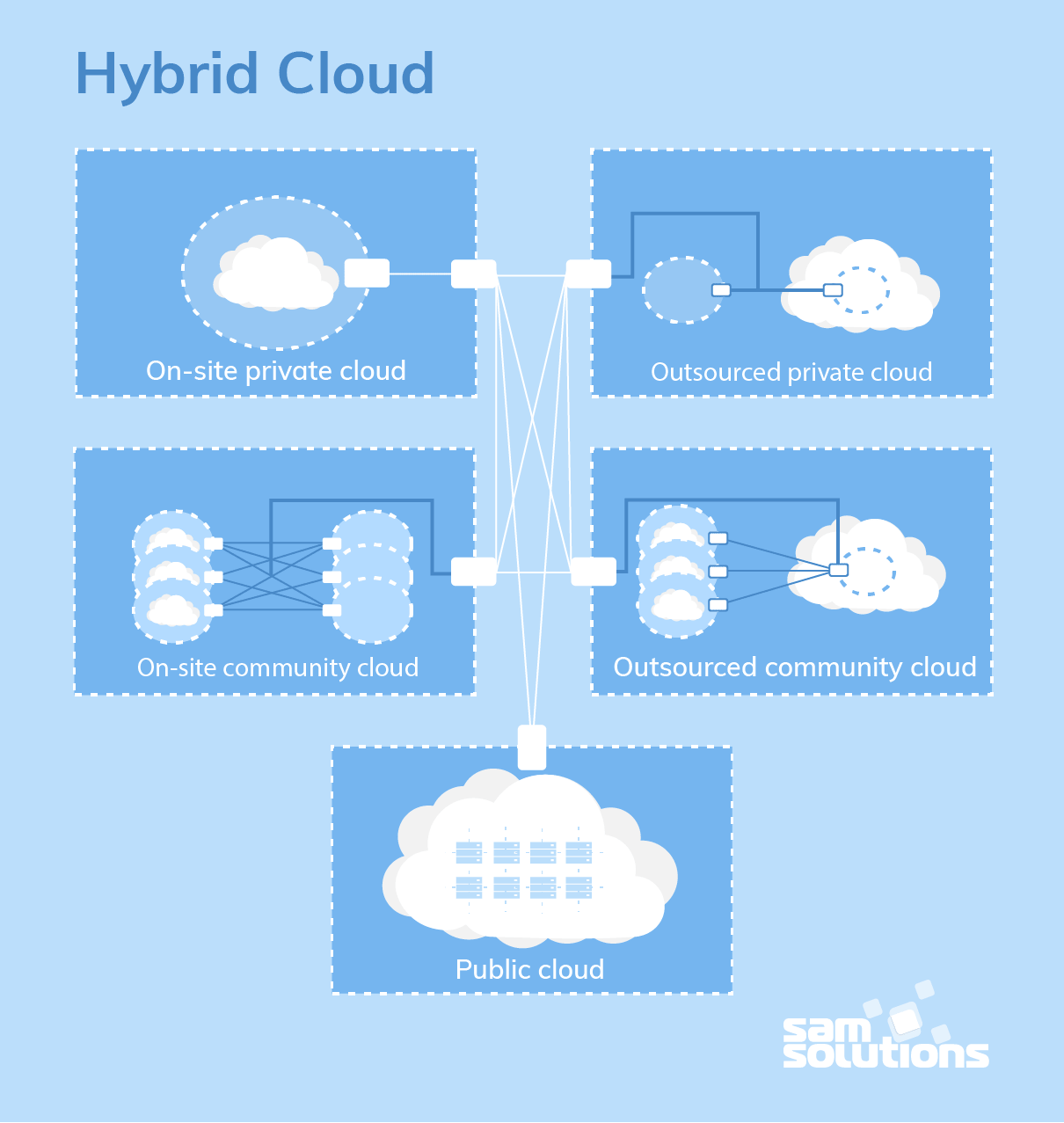
The Benefits of a Hybrid Cloud
- Improved security and privacy
- Enhanced scalability and flexibility
- Reasonable price
However, the hybrid deployment model only makes sense if companies can split their data into mission-critical and non-sensitive.
The Comparison of Top Cloud Deployment Models
To facilitate your choice of a deployment model, we have created a comparative table that provides an overview of the most business-critical features of each type of cloud.
The comparative analysis of the best deployment models
| Public | Private | Community | Hybrid | |
| Ease of setup and use | Easy | Requires IT proficiency | Requires IT proficiency | Requires IT proficiency |
| Data security and privacy | Low | High | Comparatively high | High |
| Data control | Little to none | High | Comparatively high | Comparatively high |
| Reliability | Low | High | Comparatively high | High |
| Scalability and flexibility | High | High | Fixed capacity | High |
| Cost-effectiveness | The cheapest | Cost-intensive; the most expensive model | Cost is shared among community members | Cheaper than a private model but more costly than a public one |
| Demand for in-house hardware | No | Depends | Depends | Depends |
We develop innovative cloud-based solutions for clients around the world
Careful consideration of all business and technical requirements, as well as of each model’s specifics, is a prerequisite for a successful shift to the cloud. This is a challenging task, which is why we recommend opting for professional cloud deployment services.
Our extensive expertise allows us to choose the model that best fits your company. Based on your requirements and expectations, we’ll help you improve your performance and avoid risks and security issues in the future.



















 The Latest 15 Information Technology Trends in 2024
The Latest 15 Information Technology Trends in 2024 Top 10 Embedded Software Development Tools
Top 10 Embedded Software Development Tools IaaS vs. PaaS vs. SaaS: What’s the Difference?
IaaS vs. PaaS vs. SaaS: What’s the Difference? 10 Examples of Predictive Analytics
10 Examples of Predictive Analytics




